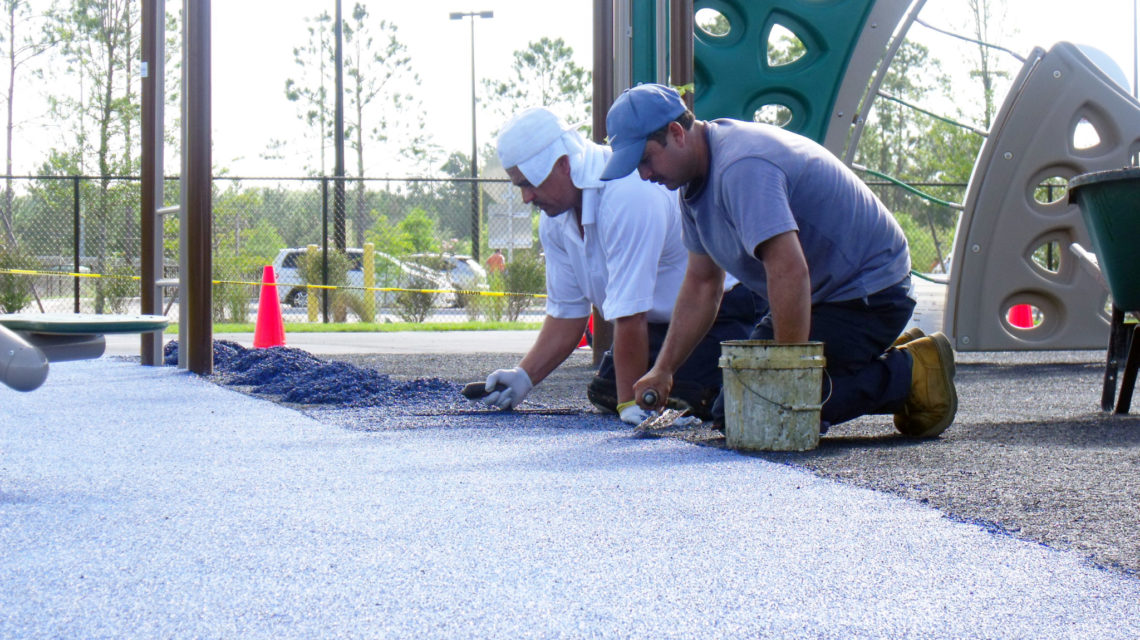Some of the most desired and inquired about safety surfaces for playgrounds are the rubber tiles and the poured in place rubber surfacing. Both of these surfaces have a few similarities but are also very different as well. They both are recommended safety surfaces and are handicap accessible type surfaces. They both are around the same price range and they both offer some design potential. Depending on the area that you are working with and what type of look you are going for will help in the decision of which of these two surfaces will work for you.
Rubber tiles come in a variety of sizes and thicknesses to accommodate any fall height you have on your playground. These are usually installed over a solid surfacing such as concrete. Depending on the type of rubber tiles they can interlock, be glued to the surface beneath or glue each tile together side by side. If the base surfacing is not level it will show with the rubber tiles. The tiles come in a variety of colors so there is some design potential for them but it is very limited due to them only coming in one size. There is very little maintenance on this surface. Another up sides to rubber tiles is if one is not in good condition you can just replace that one area. A limitation that this surfacing is if you have an irregular use zone that you are covering. Another issue that tiles run into is sun exposure. If there is too much sun exposure it will cause the tiles to shrink therefore causing gaps and tripping hazards between the tiles. This also makes it hard to replace tiles since they are not the same size as when purchased and will not line up properly next to each other. If the area is well shaded then there should be no issues with this.
Poured in place rubber surfacing usually installed over concrete or a crushed aggregate base. This surfacing has more steps to the application process than the rubber tiles. Once the base is put down there is a shredded rubber buffings layer that is mixed with a binder to create the cushioning thickness that is needed. Then the epdm layer which is the smaller rubber granules are then mixed with the binder and put on top. This surface is hand troweled. The great thing about this surfacing is that if an area needs a thicker surface the installers can make a gradual transition between the required thicknesses. Poured in place comes in a variety of colors and allows for there to be an endless amount of design options. Repair work is also fairly simple. You can purchase a patch kit that covers a small square footage that comes with everything you need to repair a damaged area. Maintenance for this type of surfacing requires that the surfacing be cleaned on a regular basis if there is constant foot traffic and debris on the surface. A cap coat is also recommended every few years to allow the poured in place to last.

